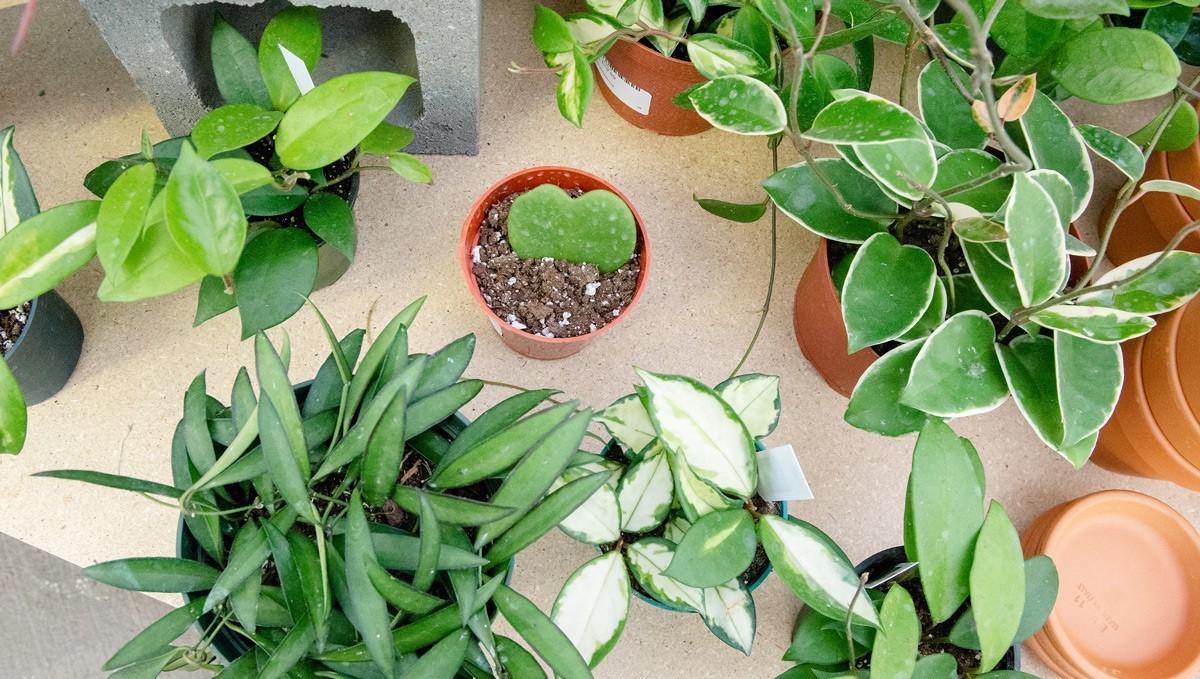
The Wax Plant, also known as Hoya, is a fascinating and unique species that has captured the attention of plant enthusiasts around the world. With its thick, waxy leaves and stunning blooms, this plant has a beauty that is hard to resist. But there’s more to the Wax Plant than meets the eye. In this article, we will explore 16 extraordinary facts about the Wax Plant that will deepen your appreciation for this captivating botanical wonder. From its origins and growth habits to its uses and care requirements, you’ll discover a wealth of information about this remarkable plant. So, let’s dive in and uncover the secrets of the Wax Plant!
Key Takeaways:
- The Wax Plant, also known as Hoya, is a unique and beautiful plant with over 200 species, waxy leaves, and extraordinary flower clusters. It’s low-maintenance and air-purifying, making it a remarkable addition to any plant collection.
- Wax Plants are not only visually stunning but also have fascinating qualities, such as changing flower colors, air-purifying abilities, and the potential to bring good luck. They are a great choice for both indoor and outdoor gardening, adding charm and beauty to any space.
The Wax Plant, also known as Hoya, is a member of the Apocynaceae family.
This family also includes other well-known plants such as oleander and star jasmine.
The Wax Plant gets its name from its waxy, succulent leaves.
These leaves have a glossy appearance and are known for their ability to retain moisture.
There are over 200 known species of Wax Plant.
Each species has its own unique characteristics and can vary in leaf shape, color, and even fragrance.
Wax Plants are native to tropical and subtropical regions.
They are commonly found in countries such as India, China, and Australia.
The Wax Plant is popular for its unique flower clusters.
These clusters, known as umbels, are composed of small, star-shaped flowers that emit a pleasant fragrance.
Some species of Wax Plant produce flowers that change color as they age.
These flowers may start off white and gradually turn pink or red over time.
Wax Plants are excellent climbers.
They use aerial roots to attach themselves to surfaces such as trees or trellises, allowing them to grow vertically.
The primary method of propagation for Wax Plants is through stem cuttings.
These cuttings can easily be rooted in water or soil, making it a popular choice among plant enthusiasts.
The Hoya carnosa is one of the most common species of Wax Plant.
It is known for its thick, dark green leaves and fragrant, star-shaped flowers.
Some species of Wax Plant have adapted to survive in low light conditions.
This makes them a great choice for indoor gardening or areas with limited sunlight.
Wax Plants are not just aesthetically pleasing, they also have air-purifying qualities.
They help to remove toxins from the surrounding air, making them a beneficial addition to any room.
In some cultures, the Wax Plant is believed to bring good luck and prosperity.
It is often given as a gift to symbolize growth and abundance.
The leaves of some Wax Plant species can be used to extract a natural latex.
This latex has been traditionally used for various purposes, such as adhesive or medicinal purposes.
Wax Plants can be grown both indoors and outdoors.
When grown outdoors, they thrive in warm and humid climates.
The Wax Plant is a relatively low-maintenance plant.
It requires minimal watering and can tolerate periods of drought.
Wax Plants can live for several years, with proper care and maintenance.
Some specimens have been known to live for over 20 years.
So, there you have it – 16 extraordinary facts about the Wax Plant. From its waxy leaves to its unique flowers and air-purifying qualities, this plant is truly a remarkable addition to any plant collection. Whether you’re a seasoned plant enthusiast or just starting out, the Wax Plant is sure to captivate you with its beauty and charm.
Conclusion
The Wax Plant, also known as Hoya Carnosa, is a fascinating plant with unique characteristics and benefits. Its beautiful and fragrant flowers, low maintenance requirements, and air-purifying properties make it a popular choice among plant enthusiasts. Whether you are a seasoned plant lover or a beginner, the Wax Plant is a great addition to any indoor or outdoor garden.
FAQs
Q: How often does the Wax Plant need to be watered?
A: The Wax Plant should be watered thoroughly when the top inch of the soil is dry. It is important to avoid overwatering as it can lead to root rot.
Q: Does the Wax Plant require a lot of sunlight?
A: The Wax Plant prefers bright but indirect sunlight. It can tolerate some shade but too much direct sunlight can burn its leaves.
Q: How often should I fertilize my Wax Plant?
A: The Wax Plant should be fertilized once a month during the growing season (spring and summer) with a balanced fertilizer. It is important to dilute the fertilizer as instructed to avoid causing harm to the plant.
Q: Can the Wax Plant be grown in a hanging basket?
A: Yes, the Wax Plant can be grown in a hanging basket. Its trailing vines make it an ideal choice for hanging displays.
Q: Does the Wax Plant attract insects?
A: The Wax Plant is not known for attracting many insects. However, it may occasionally attract common pests like aphids or mealybugs. Regular inspections and prompt action can help keep the plant pest-free.
Q: Can the Wax Plant survive in low humidity conditions?
A: Yes, the Wax Plant is relatively tolerant of low humidity conditions. However, it thrives in higher humidity environments, so misting the plant occasionally or placing it near a humidifier can be beneficial.
If you're fascinated by the extraordinary world of plants, don't miss our other captivating articles. Discover the surprising facts about the Hoya, also known as the Wax Flower, and its enchanting blooms. Explore the enigmatic LoveinaPuff, a unique vining plant with intriguing characteristics. Dive into the diverse realm of succulents and learn about their incredible adaptations. From the waxy leaves of Hoyas to the mesmerizing tendrils of LoveinaPuffs and the resilience of succulents, there's always more to uncover in the captivating world of plants.
Was this page helpful?
Our commitment to delivering trustworthy and engaging content is at the heart of what we do. Each fact on our site is contributed by real users like you, bringing a wealth of diverse insights and information. To ensure the highest standards of accuracy and reliability, our dedicated editors meticulously review each submission. This process guarantees that the facts we share are not only fascinating but also credible. Trust in our commitment to quality and authenticity as you explore and learn with us.


